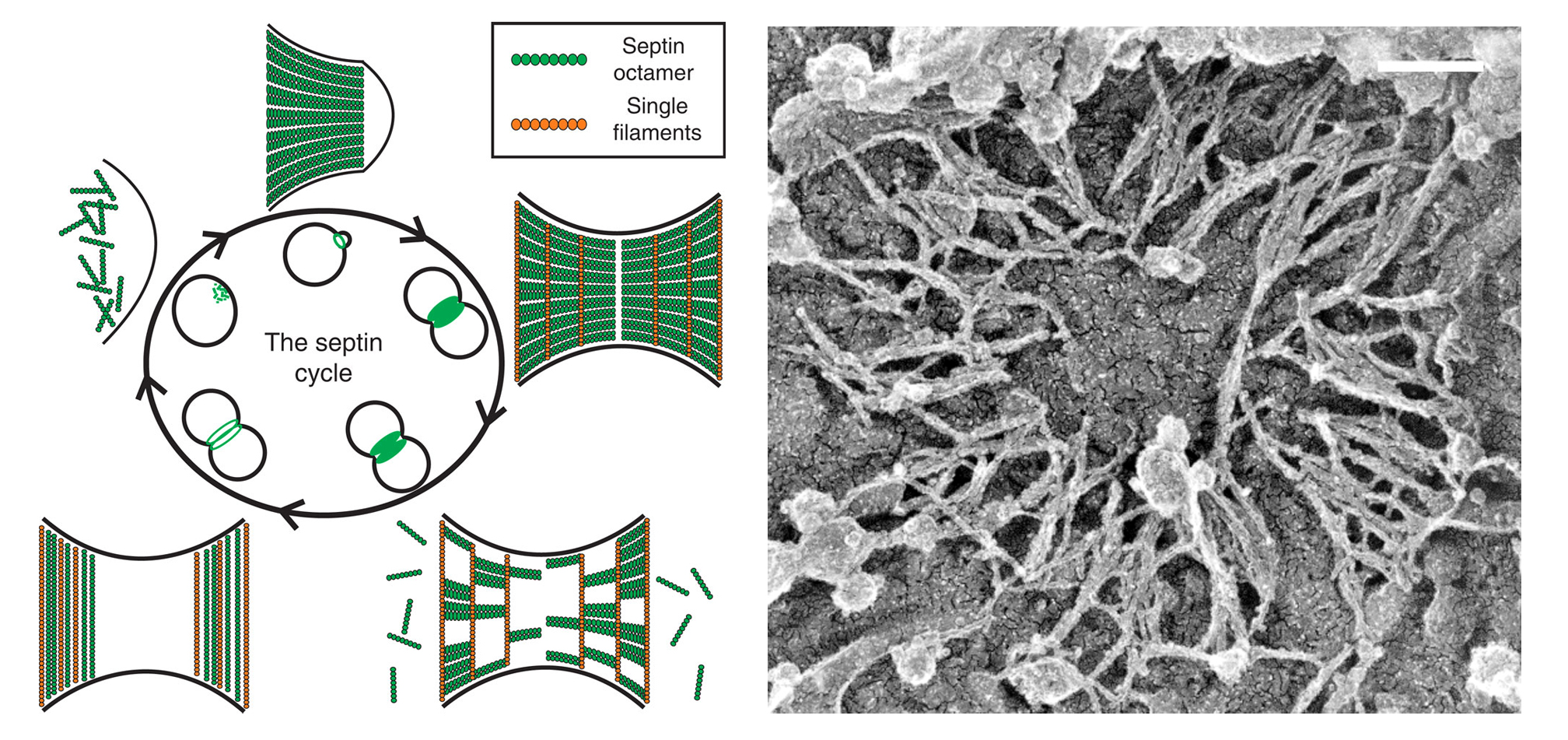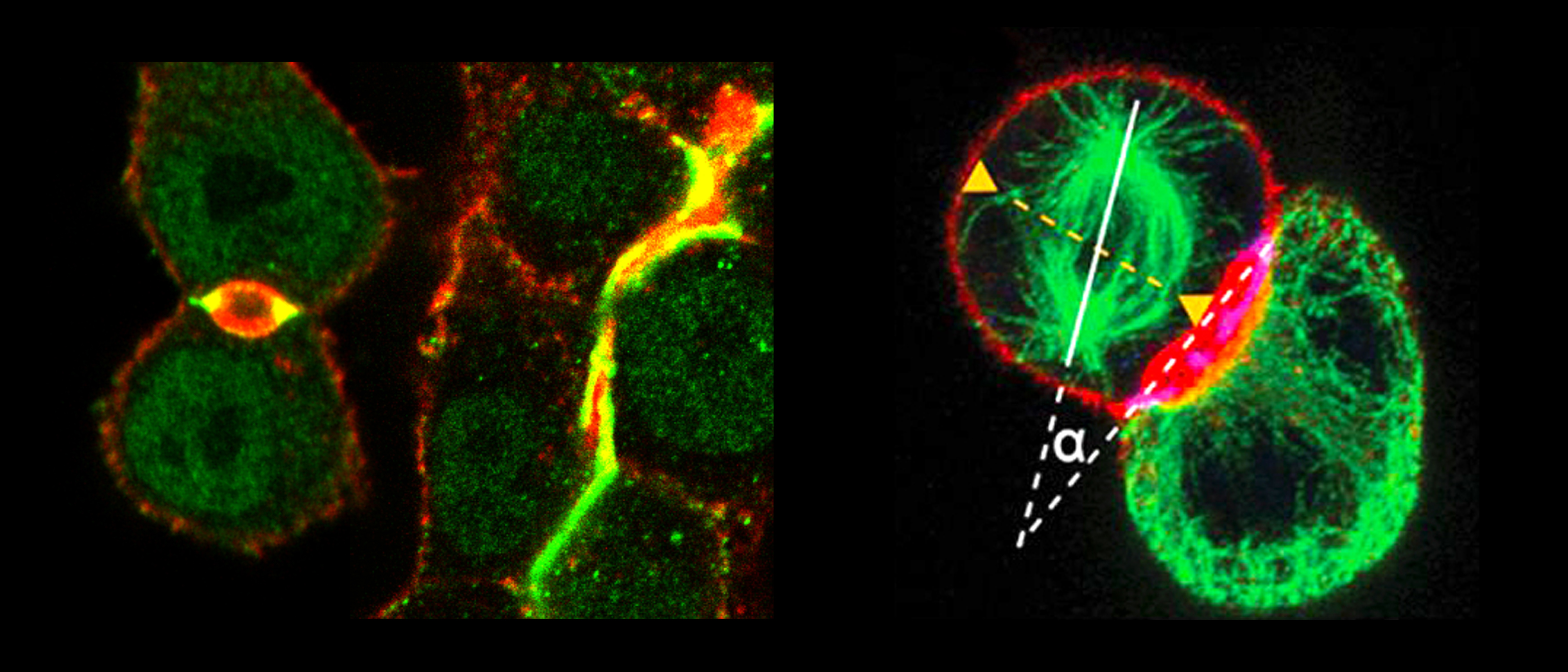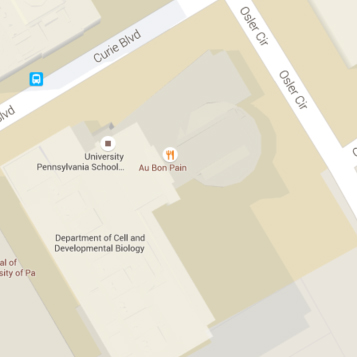RESEARCH DESCRIPTION
Research in the Bi laboratory is aimed at elucidating the general mechanisms of cell polarization and cytokinesis, two fundamental processes essential for the survival of all organisms. We investigate these problems using the budding yeast Saccharomyces cerevisiae as well as mammalian cells as our experimental systems. We use a wide range of approaches spanning from genetics, live imaging and EM, biochemistry, to computational modeling.
KEY WORDS: Cell polarity, cytokinesis, septins, actin cytoskeleton, Cdc42 signaling, exocytosis, morphogenesis, yeast, and mammalian cells
RESEARCH TOPICS
1. Cell polarization and cytokinesis in budding yeast
S. cerevisiae reproduces by budding ‑ a process of polarized cell growth followed by asymmetric cell division. The small GTPase Cdc42, first identified in this organism, plays a central role in polarity establishment and maintenance in all eukaryotes including humans. Currently, we address two major questions in the context of Cdc42 regulation and its vital role in symmetry breaking, cytoskeletal polarization, and exocytosis: 1) how does the cell generate a single axis of polarization, and 2) how does the cell translocate polarity determinants during budding?
Cytokinesis in fungi and animal cells is achieved by the concerted actions of a contractile actomyosin ring (AMR), targeted vesicle fusion, and localized extracellular matrix remodeling. Our goal is to determine: 1) how the AMR is assembled and disassembled during the cell cycle, and 2) how the AMR is spatiotemporally coupled to targeted membrane deposition to enable robust cytokinesis. These questions are addressed in both budding yeast and mammalian cells.

Close
2. Structure and function of the septin cytoskeleton in budding yeast
Septins are cytoskeletal proteins that were first discovered in budding yeast, but are now known to be widely present in fungal and animal cells. Mutations or overexpression of septin genes cause serious diseases such as cancer, neurodegenerative diseases, and infertility. Septins play critical roles in diverse cellular functions such as cytokinesis, cell migration, and exocytosis by acting as a cellular scaffold and/or diffusion barrier. In S. cerevisiae, septins form an hourglass at the division site before anaphase, which is then converted to a double ring sandwiching the AMR at the onset of cytokinesis. Currently, we are trying to determine the mechanism and function of septin higher‑order assembly and its architectural remodeling during the cell cycle.

Close
3. Hepatocyte polarization and bile canaliculus formation
The liver is an essential organ for vertebrates. All its vital functions including detoxification and the synthesis and secretion of serum proteins and bile acids critically depend on the polarization and bile canaliculus (BC) formation of the hepatocytes (liver cells) – a class of specialized epithelial cells. Recently, we discovered that cytokinesis defines a spatial landmark for hepatocyte polarization and BC formation. Currently, we are trying to determine the molecular mechanisms underlying each stage of the process using hepatocyte cell lines as well as mouse genetics (in collaboration with Dr. Chengran Xu at Peking University, China).

Close

